When and how to sow aquilegia for seedlings and in open ground: planting and care
Aquilegia or the catchment always and everywhere attracts the eye with its graceful, bizarre flowers, sometimes overshadowing the most luxurious flowers in the garden. However, to grow this delicate and beautiful plant, you will have to roll up your sleeves. This is understandable, because aquilegia also has its own requirements when growing for seedlings, leaving after planting it in open ground. All this, as well as reproduction by dividing the bush, pruning after flowering, preparing for winter, will be discussed in our article.
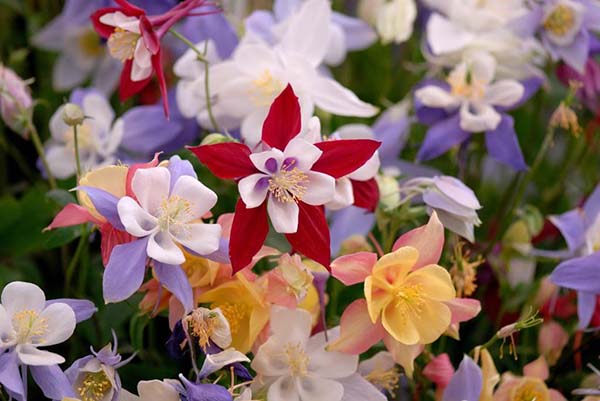
Content
When to sow aquilegia for seedlings and outdoors
In order to obtain more powerful and vigorous plants, aquilegia should first be sown on seedlings.How long does it take? It is optimal to sow seeds in the first half of spring -in March-April, then you will get strong seedlings by May-June.
Important! If you plant aquilegia for seedlings in January-February, then theoretically it will be able to bloom in the first year. However, in the first year it is still better not to let a young immature plant bloom, otherwise it simply will not be able to survive the winter.
But you can sow aquilegia seeds directly into open ground... It is recommended to carry out it when return spring frosts pass, i.e. about from mid-May, and no later than mid-June.
Winter sowing
Many people quite justifiably believe that aquilegia seeds need natural stratification, so it is best to carry out just under-winter sowing.
Video: sowing aquilegia before winter
Growing aquilegia from seeds: correct sowing for seedlings
Before sowing aquilegia seeds for seedlings, it is necessary to carry out some preparatory measures, namely: choose containers, soil and, most importantly, stratify the seeds, and then perform direct sowing (although some manage to combine stratification with sowing, but more on this later ).
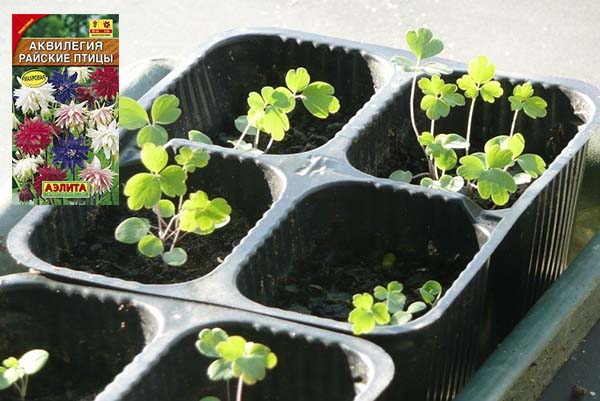
Video: briefly about growing aquilegia
Suitable container and soil
For the initial sowing of seedlings, you will need small containers (for example, food grade plastic with a lid).
Then it will be quite convenient to unpack the aquilegia seedlings into individual and deeper containers (cups or cassettes), which should already have drainage holes.
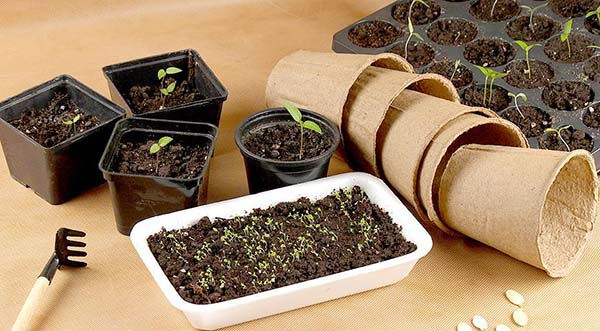
Any soil is suitable, in this sense, aquilegia is unpretentious. The most convenient way is to purchase a ready-made substrate for growing flower seedlings.
Advice! It is recommended to sift the soil immediately before sowing seeds to make it looser. So the seeds can easily and quickly break through. It is also very desirable and even mandatory disinfect the soil.
Seed preparation
As mentioned earlier, aquilegia is needed stratification, thanks to which you will have more active and friendly seedlings.
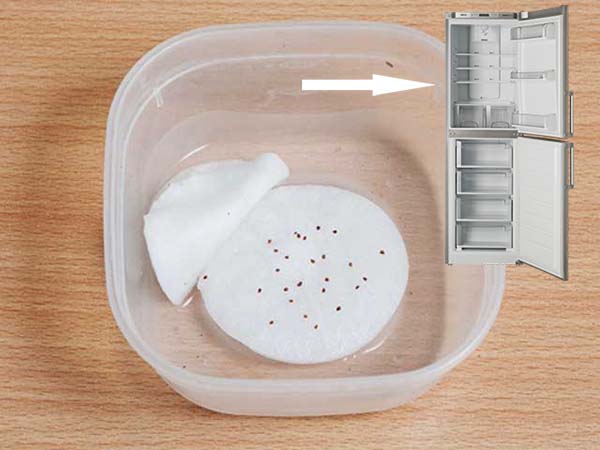
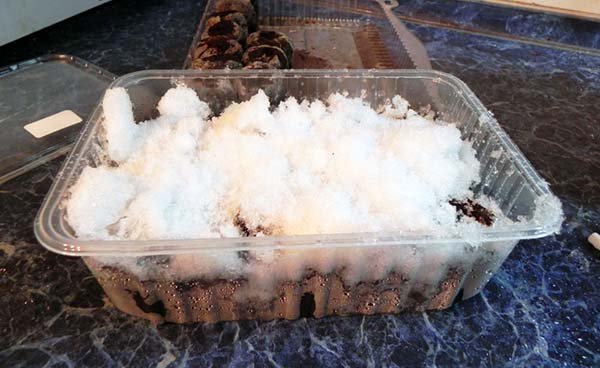
Video: sowing and growing aquilegia seedlings with stratification
However! It should be understood that this agrotechnical method (stratification) allows precisely improve germination seeds. But this does not mean at all that without it, nothing will sprout for you, especially if you are confident in the quality of your seeds.
Direct sowing
Step-by-step instructions for sowing aquilegia seeds for seedlings:
- Find a suitable container.
- Fill it with soil.
- Thoroughly moisten the soil with a spray bottle.
- Spread the seeds evenly over the soil surface.
Advice! Since the seeds of aquilegia are very small, in principle, like many perennials, it is convenient to sow them with a toothpick, which must be moistened before use.
- Sprinkle with earth 0.5 cm.
- Lightly moisten again with a spray bottle.
- Cover with a lid (if you have a food container) or cover with foil to achieve a greenhouse effect.
- Remove in a relatively warm place (germination temperature of aquilegia seeds - + 18-22 degrees).
Video: aquilegia - growing from seeds and care
By the way! The following video shows an alternative method of sowing aquilegia seeds under snow. Thus, the seeds will undergo a kind of natural stratification.
Video: features of sowing aquilegia seeds
Seedling care
When the first friendly shoots appear (after about 10-14 days), the shelter will need to be removed.
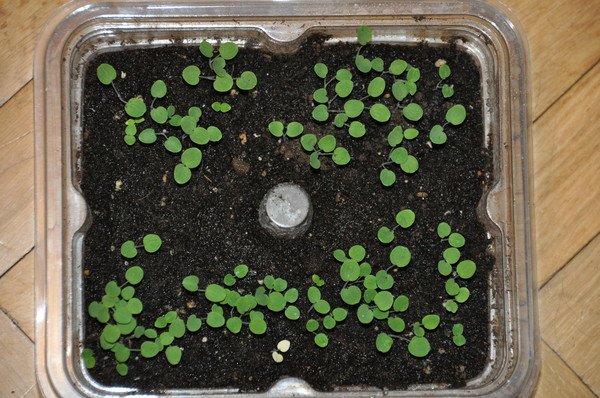
Now the seedlings need a fairly long daylight hours and regular watering as the soil dries up.
Picking
Aquilegia quickly grows the root system, besides, it has rather long tap roots, therefore, if you sowed in a shallow container, then when the plant has 2-3 true leaves (about a month after sowing), it should be dived into deeper cups (with drainage holes).
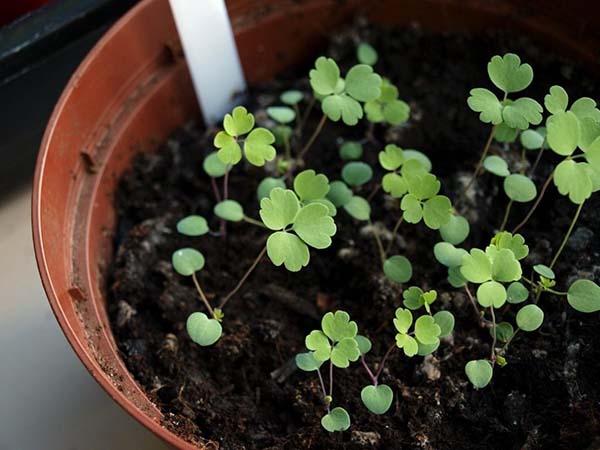
The aquilegia picking procedure is as standard as possible:
- Moisten the soil in a common container so that the seedlings are easily accessible.
- Take a convenient tool for you.
- Carefully pick up the seedlings and transfer them to new containers in which small indentations are made.
- Compact the soil around the seedling and water lightly.
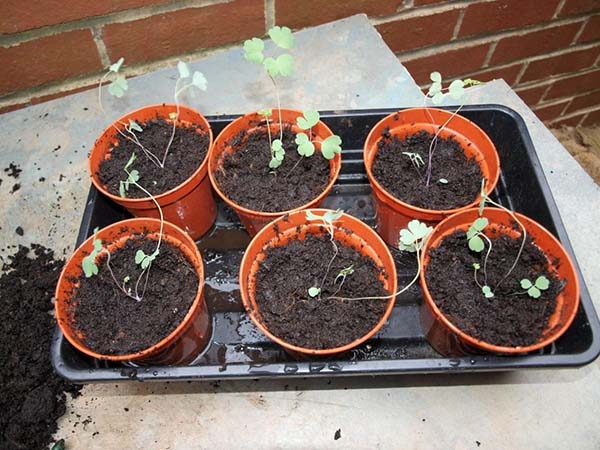
Care after picking is similar: watering as the soil dries up.
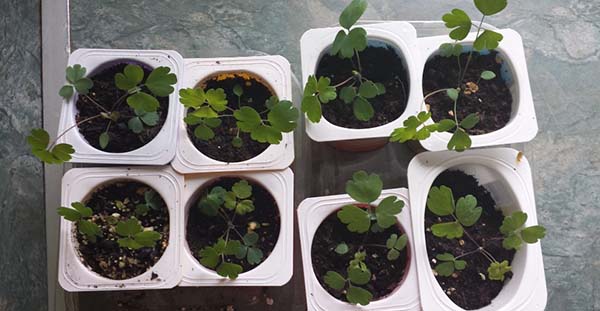
When and how to plant aquilegia seedlings in open ground
A month after the picking (i.e. 2 months after sowing), when the seedlings grow up and get stronger, they can already be planted in open ground.
Important! If you have sown aquilegia earlier, you should still wait until the return spring frosts take place, because sub-zero temperatures will simply ruin your seedlings. In general, the plant will be able to withstand a drop in temperature to a maximum of +5 degrees.
Place and soil for planting in the garden
Aquilegia can be called a fairly unpretentious plant that you can plant both in the sun and in partial shade, and even in the deep shade of trees or shrubs, because it is shade-tolerant. However, in the first year it is still better to plant it in partial shade or shade, because young plants can simply burn out in a very sunny place.
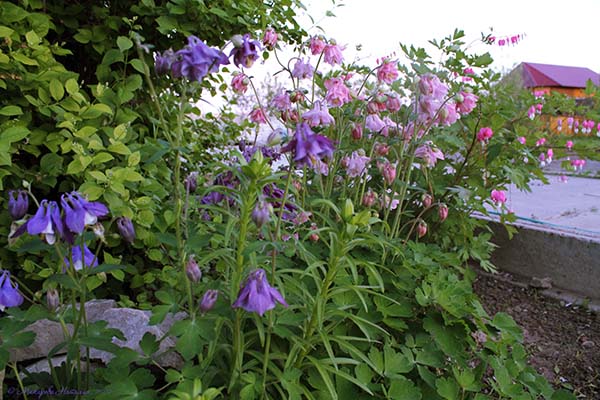
Aquilegia in landscape design! Flowers will look beautiful in group plantings of perennials in rabatkas, mixborders.
Especially often it is planted in shady places near water bodies.
In general, aquilegia goes well withirises, bells, astilboy, hosta, ferns and othersshade-tolerant and shade-loving plants.
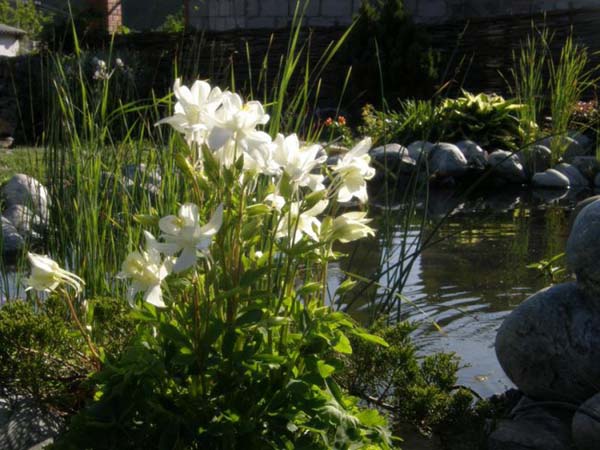
The same applies to the soil. It can be anything - even sod, even loam, except that it is always good to add a little compost or humus to the planting pit. However, even in unfertilized land, aquilegia, in theory, will grow.
Transplanting
Planting aquilegia seedlings in open ground is simple:
- chose the most suitable semi-shady or shady place on the site;
- prepared holes according to the size of your containers in which the seedlings grow;
- planting containers were spilled in advance so that the seedlings could be easily pulled out of them;
- they carefully pulled out the seedlings, put them in the holes, covered them with earth and pressed them down;
Saplings should be planted at a distance of 30-35 cm from each other.
- done watering;
- mulched (for example, sawdust), so that air penetrates better to the roots of the plant and moisture does not evaporate quickly.
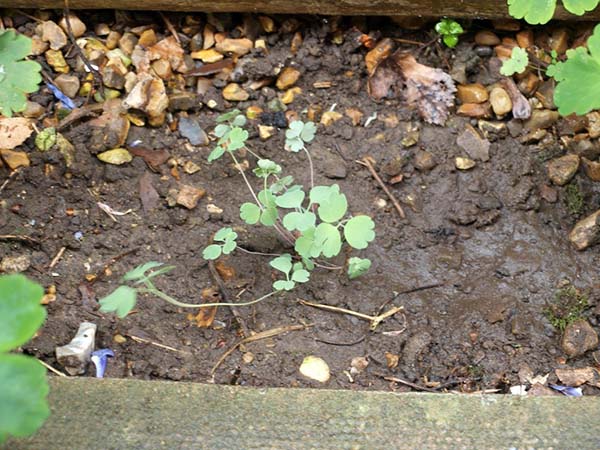
Reproduction of aquilegia by dividing the bush
Aquilegia can be obtained not only by growing seedlings or by direct sowing of seeds in open ground, but also by dividing an adult 4-5 year old bush. As for the timing, it is better to divide the bushes in autumn or early spring.
Important! Every 5-7 years (but it is possible up to 10 years), it is advisable to update the bushes, otherwise they begin to lose their decorative effect.
How to propagate aquilegia by dividing the bush:
- Before digging up the plant, it must be shed very abundantly.
- Then carefully remove from the ground, remove all green mass, leaving literally 3-5 young leaves.
- Rinse the roots thoroughly from the ground.
- Using a sharp knife, cut the main taproot in half lengthwise.
However! Some sources say that you can cut into several divisions (from a large plant to 5 divisions), each of which must have several developed buds.
- Sprinkle the slices with crushed coal.
- Plant in pre-prepared planting holes and press carefully around the ground.
- Spill well with water.
Outdoor aquilegia care
In the first year after planting, there can be no question of any flowering, all the forces of aquilegia will be aimed at taking root in a new place and building up the root system.
And in the second year after sowing - in late spring-summer (May-June), you can already enjoy the first flowering.
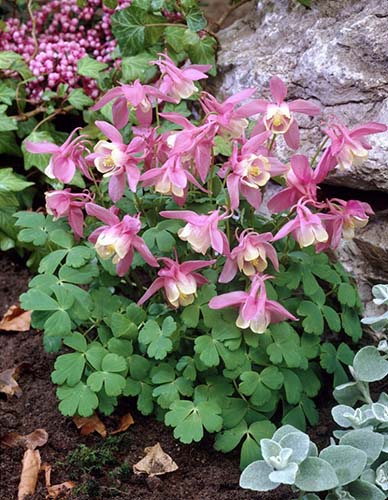
Watering
At first after planting seedlings, the plant should be watered more often so that it quickly takes root in a new place.
In the future, watering is carried out as the soil dries up. In principle, aquilegia normally tolerates drought, because has a fairly deep root system, but in general the plant is quite moisture-loving.
Top dressing
2-3 weeks after planting the seedlings, when it has already taken root, you can perform the first feeding. For this, any complex mineral or organic fertilizer with a predominant nitrogen content is suitable, which will allow aquilegia to gain green mass.
In subsequent years, 2 dressings per season will be quite enough: at the beginning of spring, nitrogen fertilizer should be used, and immediately before flowering, potash fertilizer. In this case, both mineral and organic fertilizers are suitable.
Pruning after flowering
Aquilegia refers to those flowers in which faded (dry) peduncles must be promptly removed so that the plant does not waste extra energy on procreation - planting seeds.
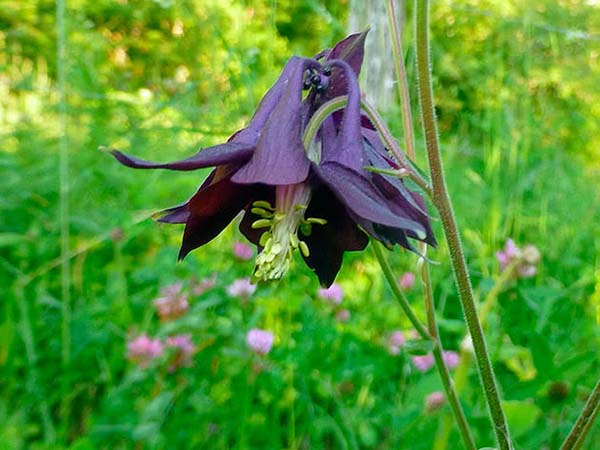
By the way! Of course, if you want aquilegia to reproduce by self-seeding, then you can not prune. But it is worth knowing, if you have a hybrid, then varietal characteristics are lost with this method of reproduction.
Preparing for winter
When the plant dries up and withers in the first year, in the fall you can cut off its aerial part, because a new one will grow next year.
Video: aquilegia - care and reproduction
If you are already carried away by the idea of growing such an interesting flower as aquilegia on your site, pay attention to the subtleties of planting it on seedlings, leaving after planting in open ground, as well as reproducing by dividing and pruning after flowering.
Video: everything about growing aquilegia

